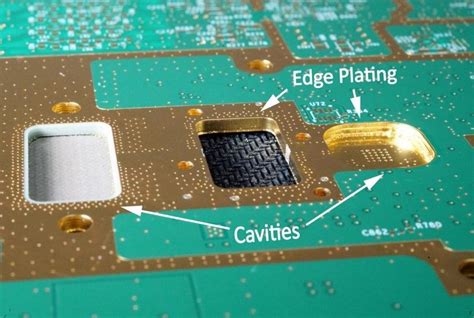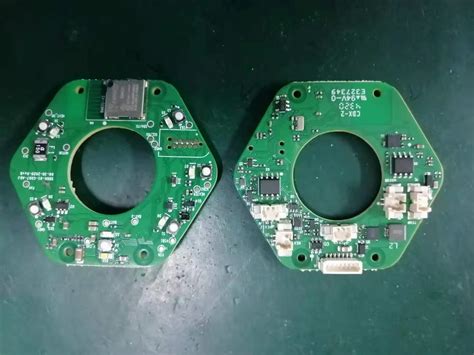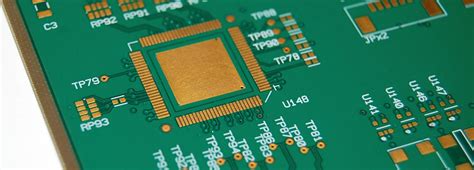Flex pcb minimum trace width
Understanding Minimum Trace Width in Flex PCBs: Key Considerations
In the realm of flexible printed circuit boards (PCBs), understanding the intricacies of design parameters is crucial for ensuring optimal performance and reliability. One such critical parameter is the minimum trace width, which plays a significant role in the functionality and durability of flex PCBs.
As electronic devices continue to shrink in size while increasing in complexity, the demand for flexible PCBs with precise trace specifications has grown exponentially. Therefore, comprehending the factors that influence minimum trace width is essential for engineers and designers working in this field.
To begin with, the minimum trace width in a flex PCB is determined by several factors, including the current-carrying capacity, the material properties, and the manufacturing capabilities.
The current-carrying capacity is a primary consideration, as the trace width must be sufficient to handle the electrical load without overheating or causing a failure. This is particularly important in applications where high current levels are involved, as inadequate trace width can lead to increased resistance, voltage drop, and potential damage to the circuit.
Moreover, the material properties of the flex PCB also influence the minimum trace width.
The choice of substrate material, such as polyimide or polyester, affects the thermal and mechanical properties of the board. These materials must be able to withstand the thermal stresses induced by the current flow, as well as the mechanical stresses from bending and flexing. Consequently, selecting a substrate with appropriate thermal conductivity and flexibility is vital to maintaining the integrity of the trace width.
In addition to material considerations, the manufacturing process itself imposes limitations on the minimum trace width.
Advanced fabrication techniques, such as laser direct imaging and precision etching, have enabled the production of finer traces. However, these processes come with their own set of challenges, including increased costs and the need for specialized equipment. Therefore, it is essential to balance the desired trace width with the capabilities and constraints of the manufacturing process to achieve a cost-effective and reliable design.
Furthermore, environmental factors must also be taken into account when determining the minimum trace width.
Flex PCBs are often used in applications where they are exposed to harsh conditions, such as extreme temperatures, humidity, and mechanical stress. These environmental factors can affect the performance and longevity of the traces, necessitating a design that can withstand such conditions. For instance, in high-temperature environments, a wider trace may be required to dissipate heat more effectively and prevent thermal degradation.
In conclusion, understanding the minimum trace width in flex PCBs involves a comprehensive analysis of various factors, including current-carrying capacity, material properties, manufacturing capabilities, and environmental conditions. By carefully considering these elements, engineers and designers can optimize the performance and reliability of flex PCBs, ensuring they meet the demands of modern electronic applications. As technology continues to advance, the importance of precise trace specifications will only grow, making it imperative for professionals in the field to stay informed about the latest developments and best practices in flex PCB design.

Design Challenges: Achieving Optimal Trace Width in Flexible Circuits
In the realm of flexible circuit design, achieving the optimal trace width is a critical challenge that designers must navigate with precision and expertise. Flexible printed circuit boards (PCBs) are increasingly favored in various industries due to their lightweight, compact, and adaptable nature. However, the unique properties of flexible substrates introduce complexities that are not typically encountered in rigid PCB design.
One of the foremost challenges is determining the minimum trace width, which is crucial for ensuring both the functionality and reliability of the circuit.
The minimum trace width in flexible circuits is influenced by several factors, including the electrical requirements, mechanical properties, and manufacturing capabilities. Electrical considerations are paramount, as the trace width must be sufficient to carry the required current without excessive resistance or heat generation. This necessitates a careful balance, as overly narrow traces can lead to increased resistance and potential failure, while excessively wide traces may not be feasible due to space constraints on the flexible substrate.
Moreover, the mechanical properties of flexible circuits add another layer of complexity.
Unlike rigid PCBs, flexible circuits must endure bending, twisting, and other forms of mechanical stress. These stresses can cause trace cracking or delamination if the trace width is not adequately designed. Therefore, designers must consider the bend radius and the frequency of flexing when determining the minimum trace width. A wider trace may be necessary in areas subject to frequent or severe bending to prevent mechanical failure.
In addition to electrical and mechanical considerations, manufacturing capabilities also play a significant role in defining the minimum trace width.
The precision of the etching process, the quality of the substrate material, and the resolution of the photolithography equipment all impact the achievable trace width. Advances in manufacturing technology have enabled the production of finer traces, but these capabilities can vary significantly between manufacturers. Consequently, designers must collaborate closely with manufacturers to understand the limitations and capabilities of their processes.
Transitioning from design to production, it is essential to conduct thorough testing and validation to ensure that the chosen trace width meets all performance and reliability criteria.
Simulation tools can be employed to model the electrical and mechanical behavior of the circuit under various conditions, providing valuable insights into potential issues before physical prototypes are produced. Additionally, prototyping and iterative testing allow designers to refine the trace width and other design parameters, ensuring optimal performance in the final product.
Furthermore, industry standards and guidelines can provide valuable benchmarks for determining minimum trace widths
. Organizations such as the Institute for Printed Circuits (IPC) offer standards that outline recommended practices for flexible circuit design, including trace width considerations. Adhering to these standards can help ensure that the design meets industry-accepted levels of quality and reliability.
In conclusion, achieving the optimal trace width in flexible circuits is a multifaceted challenge that requires careful consideration of electrical, mechanical, and manufacturing factors. By balancing these elements and leveraging advanced design tools and industry standards, designers can create flexible circuits that meet the demanding requirements of modern applications. As technology continues to evolve, ongoing collaboration between designers and manufacturers will be essential to push the boundaries of what is possible in flexible circuit design, ensuring that these versatile components continue to meet the needs of an ever-expanding array of applications.
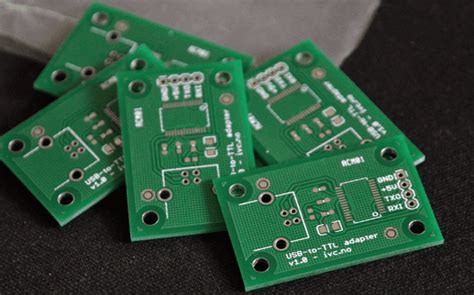
Innovations in Flex PCB Manufacturing: Reducing Trace Width Limitations
In the rapidly evolving field of electronics, the demand for smaller, more efficient devices has driven significant advancements in printed circuit board (PCB) technology. Among these innovations, flexible PCBs have emerged as a pivotal component, offering versatility and adaptability in design. One of the critical aspects of flex PCB manufacturing is the trace width, which plays a crucial role in determining the performance and reliability of the circuit. As the industry pushes the boundaries of miniaturization, reducing trace width limitations has become a focal point of innovation.
Traditionally, the trace width in PCBs has been constrained by several factors, including the capabilities of manufacturing processes and the physical properties of the materials used.
However, recent advancements in manufacturing techniques have enabled the production of flex PCBs with significantly narrower trace widths. This progress is largely attributed to the development of more precise etching and deposition methods, which allow for greater control over the dimensions of the traces. By employing advanced photolithography and laser direct imaging technologies, manufacturers can achieve trace widths that were previously unattainable, thus enhancing the overall performance of the circuit.
Moreover, the introduction of new materials has also contributed to the reduction of trace width limitations in flex PCBs.
High-performance polymers and conductive inks have been developed to offer superior electrical conductivity and mechanical flexibility. These materials not only support narrower traces but also improve the durability and reliability of the circuits, even under demanding conditions. As a result, designers can now create more complex and compact circuits without compromising on performance or longevity.
In addition to material and process innovations, the integration of computer-aided design (CAD) tools has revolutionized the way engineers approach flex PCB design.
These sophisticated software solutions enable precise modeling and simulation of circuit layouts, allowing for the optimization of trace widths and spacing. By leveraging these tools, designers can predict potential issues and make necessary adjustments before the manufacturing stage, thereby reducing the risk of defects and improving yield rates.
Furthermore, the push towards reducing trace width limitations is not solely driven by the need for smaller devices.
It also aligns with the growing emphasis on sustainability and resource efficiency in electronics manufacturing. Narrower trace widths mean less material usage, which can lead to cost savings and a reduction in environmental impact. As manufacturers strive to meet the increasing demand for eco-friendly products, innovations that enable more efficient use of materials are becoming increasingly valuable.
Despite these advancements, challenges remain in the quest to further reduce trace width limitations.
As traces become narrower, issues such as signal integrity and thermal management become more pronounced. Addressing these challenges requires a holistic approach that considers not only the trace width but also the overall design and material selection. Ongoing research and development efforts are focused on overcoming these obstacles, ensuring that flex PCBs continue to meet the evolving needs of the electronics industry.
In conclusion, the innovations in flex PCB manufacturing have significantly reduced trace width limitations, paving the way for more compact and efficient electronic devices. Through advancements in manufacturing processes, materials, and design tools, the industry has made remarkable strides in overcoming traditional constraints. As technology continues to advance, it is likely that further reductions in trace width will be achieved, opening up new possibilities for the design and functionality of electronic devices.
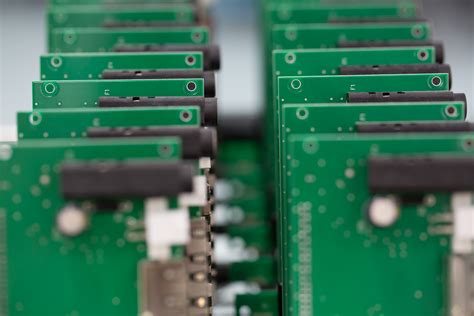
Impact of Minimum Trace Width on Flex PCB Performance and Reliability
In the realm of flexible printed circuit boards (PCBs), the minimum trace width is a critical parameter that significantly influences both performance and reliability. As electronic devices continue to shrink in size while increasing in functionality, the demand for compact and efficient circuit designs has never been greater. Consequently, understanding the impact of minimum trace width on flex PCB performance and reliability is essential for engineers and designers striving to optimize their products.
To begin with, the trace width on a flex PCB refers to the width of the conductive paths that connect various components on the board.
These traces are typically made of copper and are responsible for carrying electrical signals throughout the circuit. The minimum trace width is the narrowest width that can be reliably manufactured and still perform its intended function without failure. This parameter is crucial because it directly affects the electrical performance of the PCB. For instance, narrower traces can lead to increased electrical resistance, which in turn can cause voltage drops and power losses. This is particularly important in high-frequency applications where signal integrity is paramount.
Moreover, the minimum trace width also plays a significant role in the thermal management of a flex PCB.
As current flows through the traces, it generates heat due to the resistance encountered. If the trace width is too narrow, the heat generated can exceed the material’s capacity to dissipate it, leading to potential overheating and damage to the board. Therefore, ensuring an adequate trace width is vital for maintaining the thermal stability of the PCB, especially in applications where high currents are involved.
In addition to electrical and thermal considerations, the mechanical reliability of a flex PCB is also influenced by the minimum trace width.
Flexible PCBs are often used in applications where the board must bend or flex during operation, such as in wearable devices or foldable electronics. In such cases, traces that are too narrow may be more susceptible to mechanical stress and fatigue, which can result in cracks or breaks over time. By optimizing the trace width, designers can enhance the mechanical durability of the PCB, ensuring it can withstand repeated flexing without failure.
Furthermore, the manufacturing process itself imposes limitations on the minimum trace width that can be achieved.
Advanced fabrication techniques, such as laser direct imaging and high-resolution photolithography, have enabled the production of finer traces. However, these processes come with increased costs and complexity. Therefore, designers must balance the need for narrow trace widths with the practicalities of manufacturing capabilities and budget constraints.
In conclusion, the minimum trace width is a pivotal factor that affects the performance and reliability of flex PCBs. It influences electrical resistance, thermal management, mechanical durability, and manufacturing feasibility. As technology continues to advance, the demand for smaller and more efficient electronic devices will drive the need for even finer trace widths. Consequently, engineers and designers must remain vigilant in their understanding of how trace width impacts their designs, ensuring that they can deliver products that meet the ever-evolving demands of the market. By carefully considering the implications of minimum trace width, they can optimize their flex PCB designs for enhanced performance and reliability, ultimately contributing to the success of their electronic innovations.

